Perfecting the Fundamentals: Trends for Social Media Marketing Success from #SMMW15
by Anvil on April 6, 2015FacebookLeaders across social media, digital and content marketing descended upon San Diego in late March for Social Media Marketing World 2015. With sessions covering the latest marketing tactics across major social platforms, advance paid media techniques, video marketing strategies, content marketing and mobile, attendees came away armed with the latest industry information to advance in their social media marketing efforts. Beginning with the keynote from Social Media Examiner founder Michael Stelzner, trends in social media marketing for 2015 were clearly defined. To remain competitive, brands will need to focus their marketing efforts on five key disciplines: podcasts, mobile streaming, native video, real-time marketing and mobile marketing.
Podcasts
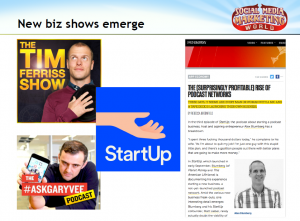
Podcasts are alive and well, regularly used among digital marketing professionals. Podcasts have gained new attention in mainstream media, mainly due to the popularity of the Serial podcast that launched in the fall of 2014. Serial took the media by storm. Reputable news sources regularly examined the case featured in the podcast series. Serial sparked new interest in creating podcasts. In the last six months alone, several new business podcasts have emerged from popular personalities including Tim Ferriss, Alex Blumberg, and Gary Vaynerchuk.
Including a podcast in your digital marketing strategy offers clear value for your business, most notably for audience retention and engagement. Podcasts result in high audience retention. On average fans listen to 10 minutes or more of an episode. The result is that fans feel more connected to the podcast content and creator, helping build genuine relationships with audiences. Podcasts tend to have a much higher volume of listeners, compared to traditional local radio shows. Highly engaged audiences provide brands an opportunity to extend thought leadership in their given fields and increase brand awareness to a highly targeted market. Podcasts can prove to be a successful method for brands in reaching new audiences and driving highly qualified site traffic. Event promotion strategies utilizing podcasts are effective. Podcasters can introduce potential attendees to conference content topics and speakers. For example, Michael Stelzner used the Social Media Examiner podcast prior to Social Media Marketing World to feature speakers and session topics, helping drive conference RSVPs. All podcast activities are trackable, allowing marketers to prove ROI success from their podcast efforts.
Mobile Streaming
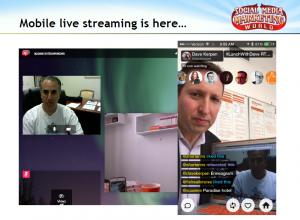
Periscope and Meerkat were hot topics throughout SMMW15. You could find digital giants such as Guy Kawasaki and Brian Fanzo live streaming via Meerkat throughout the conference. While both apps are relatively new, the concept of mobile streaming is poised to become a permanent fixture in the evolution of social video trends. Why are users hooked and how can utilizing mobile streaming impact your brand? Authenticity. Similar to the appeal of real-time photo and video content popular among Snapchat users, live content streaming offers an unedited view into a brand. These apps are highly popular for major events and can expand further to offer industry and cultural insights from a brand. Whether hosting live Q&A sessions, company tours, mobile-streaming events or special behind-the-scenes content, mobile streaming can help a brand connect with new audiences, grow social followings and build stronger relationships with its audience.
Native Video
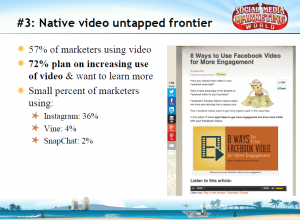
Video marketing is leading the trends for social in 2015. Facebook and Twitter have built out video marketing advertising solutions, encouraging the use of native video content. How does native video content differ from posting links from YouTube? Facebook and Twitter have accounted for native video uploads in their algorithm, favoring this practice over YouTube links. Native video often sees higher organic engagement and view counts. When backed by paid media, view and engagement performance is impressive. Beyond creating branded video content, brands now need to develop real-time video strategies to remain competitive on social.
Real-Time Marketing
Many sessions at SMMW15 referenced incorporating real-time marketing into ongoing strategies. In Ekaterina Walter’s Dos and Don’t of Real-Time Marketing Strategies session, many examples of successful real-time marketing were reviewed. Brands have the opportunity to create highly customized content to surprise and delight their fan bases. How can you get started with a successful real-time marketing strategy on social? By listening. Creating customized content requires a detailed understanding of your social fan base. Practicing social listening paired with customer research will provide the information needed to create custom content. While personally responding to fans on social is a recommended best practice for social customer service, utilizing video responses is a game changer.
A great example came from REI when Ekaterina was doing some last minute holiday shopping. Tweeting to REI for gift recommendations, REI responded with a custom video tweet reply with a unique product recommendation, branded specifically for Ekaterina via ‘REI #giftpicks for @ekaterina’. This video was created on the fly in-store and REI responded within 30 minutes to Ekaterina’s original tweet. REI created a series of similar customized video tweet replies, leading to nearly triple the amount of website traffic seen throughout their holiday season. With some basic mobile video accessory equipment, your brand can begin to create real-time video responses via mobile, helping amplify consumer engagement and build quality relationships with customers.
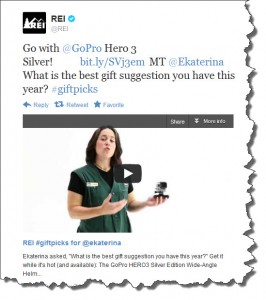
SMS Marketing
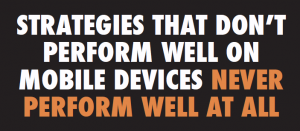
An opportunity many brands are not fully leveraging is mobile marketing. In the mobile marketing session Connect, Engage and Convert Your Social Media Audience With Mobile Marketing, Greg Hickman built a solid case for why brands should create a mobile marketing strategy. Mobile plays a part of every touch point in the consumer buying cycle, and each touch point along that buying cycling needs to be mobile friendly. Your first impression with customers is now occurring on mobile. With Google’s recent announcement of their mobile algorithm update, it’s now critical for brands to have their mobile marketing strategy and experience optimized. Why should your brand utilize mobile marketing? Take into consideration the following mobile industry statistics presented by Hickman:
— 50% of all mobile searches lead to a purchase (Source: Rocket Post)
— 50.3% of e-commerce website traffic comes from a mobile device (Source: Shopify)
— 57% of users say they won’t recommend a business with a poorly designed mobile website (Source: Google)
— 65% of all email is opened from mobile (Source: Movable Ink)
— 76% report they are more likely to read a message sooner if it’s an SMS/Text message than if it is email (Source: SAP)
Mobile impacts each part of the marketing ecosystem including email, direct mail, digital and in-store advertising. How can mobile amplify social media marketing efforts? Mobile SMS marketing can be used to drive initial awareness of campaigns/events/promotions housed on social. Considering the high open rate of SMS messaging (around 98%), SMS can be used to offer special incentives, driving users back to social. With the option for customers to opt-in, SMS marketing is a highly effective tactic in helping reach new fan bases, grow social channel followings and engagement, and increase brand loyalty.
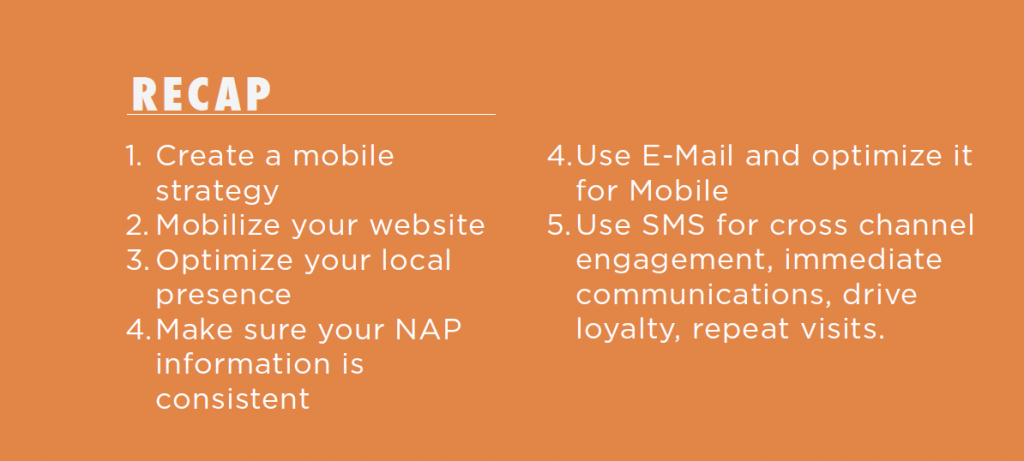
In the closing keynote Hug your Haters from Jay Baer, another important trend in social media marketing was identified. Brands have forgotten that people are the building blocks of social media. Social media channels are public forums for users to express individual opinions. Brands lacking a social media customer service strategy and not regularly listening to customer sentiment are open to potentially negative consequences that could impact their bottom line.
In his forthcoming book, Hug Your Haters, Baer explores the different types of consumers that complain; offstage and onstage haters. Offstage haters file complaints first via traditional methods, usually phone calls or emails. Onstage haters command an audience, publically expressing their dissatisfaction with brands or service across social channels or business review sites. Social media has empowered consumers to have a voice, and by 2020 the customer experience is expected to outweigh price in the brand consideration set. Social media marketing is the business of people, not products. Brands need to actively listen to their social media audience to understand their interests and brand perceptions. Placing the customer first by offering valuable content and taking action to provide a solution will transform your detractors into brand loyalists. Engaging in social listening should be the core of any brand’s social media program, ensuring long-term consumer loyalty and success for the future of social media marketing.
